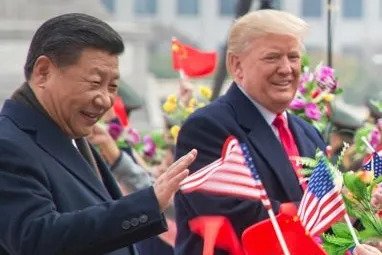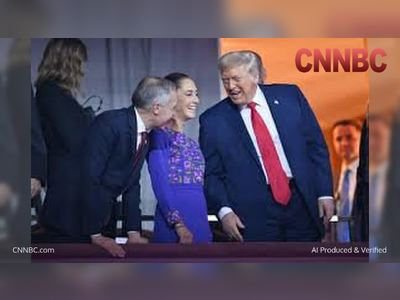
U.S. and China Agree One-Year Trade Truce, Suspending Key Section 301 Measures
White House confirms Beijing will pause export controls and U.S. will hold off tariffs under one-year framework reached by Presidents Trump and Xi
The United States and the People’s Republic of China have formalised a one-year trade truce under which Washington will suspend certain Section 301 investigations targeting Chinese sectors, and Beijing will halt export curbs on rare-earth elements and semiconductors.
The agreement, announced by the White House, was sealed following talks between Presidents Donald Trump and Xi Jinping and aims to ease escalating industrial and supply-chain tensions.
Under the accord, China has committed to lift restrictions on key materials such as rare-earth metals, graphite and permanent magnets that are vital to U.S. technology and defence supply chains.
Simultaneously, it will end investigations into U.S. companies operating in China’s semiconductor sector, including facilitating the resumption of trade from the Dutch-based Nexperia facility in China.
In return, the U.S. will suspend for twelve months its Section 301 measures against China’s maritime, logistics and ship-building industries, including port-entry fees and additional duties that had disrupted shipping flows.
Administration officials describe the deal as a “massive victory” for American economic and national-security interests.
Treasury Secretary Scott Bessent characterised the framework as a strategic accomplishment of President Trump’s campaign to secure leverage against unfair trade practices, while giving U.S. industry immediate relief from the highest cost pressures in months.
He emphasised that the truce allows American companies to plan and invest with greater certainty in key sectors.
Critics and analysts note, however, that the truce is not a comprehensive trade treaty but rather a temporary hiatus designed to stabilise relations.
Some trade observers caution that Beijing’s public statements show reservations and signal the deal may be fragile if verification mechanisms remain weak.
They point out that deeper structural issues—industrial subsidies, intellectual-property protection and market access—remain unresolved.
Still, for the U.S. business community, the immediate implications are significant: sectors reliant on Chinese-sourced minerals and semiconductors expect smoother logistics, fewer tariff shocks and improved forecasting.
The agreement also reshapes the geopolitical narrative around U.S.–China competition, shifting from open tariff escalation to managed cooperation-with-competition.
For the moment, momentum lies with the framework reached by the two leaders.
The agreement, announced by the White House, was sealed following talks between Presidents Donald Trump and Xi Jinping and aims to ease escalating industrial and supply-chain tensions.
Under the accord, China has committed to lift restrictions on key materials such as rare-earth metals, graphite and permanent magnets that are vital to U.S. technology and defence supply chains.
Simultaneously, it will end investigations into U.S. companies operating in China’s semiconductor sector, including facilitating the resumption of trade from the Dutch-based Nexperia facility in China.
In return, the U.S. will suspend for twelve months its Section 301 measures against China’s maritime, logistics and ship-building industries, including port-entry fees and additional duties that had disrupted shipping flows.
Administration officials describe the deal as a “massive victory” for American economic and national-security interests.
Treasury Secretary Scott Bessent characterised the framework as a strategic accomplishment of President Trump’s campaign to secure leverage against unfair trade practices, while giving U.S. industry immediate relief from the highest cost pressures in months.
He emphasised that the truce allows American companies to plan and invest with greater certainty in key sectors.
Critics and analysts note, however, that the truce is not a comprehensive trade treaty but rather a temporary hiatus designed to stabilise relations.
Some trade observers caution that Beijing’s public statements show reservations and signal the deal may be fragile if verification mechanisms remain weak.
They point out that deeper structural issues—industrial subsidies, intellectual-property protection and market access—remain unresolved.
Still, for the U.S. business community, the immediate implications are significant: sectors reliant on Chinese-sourced minerals and semiconductors expect smoother logistics, fewer tariff shocks and improved forecasting.
The agreement also reshapes the geopolitical narrative around U.S.–China competition, shifting from open tariff escalation to managed cooperation-with-competition.
For the moment, momentum lies with the framework reached by the two leaders.












